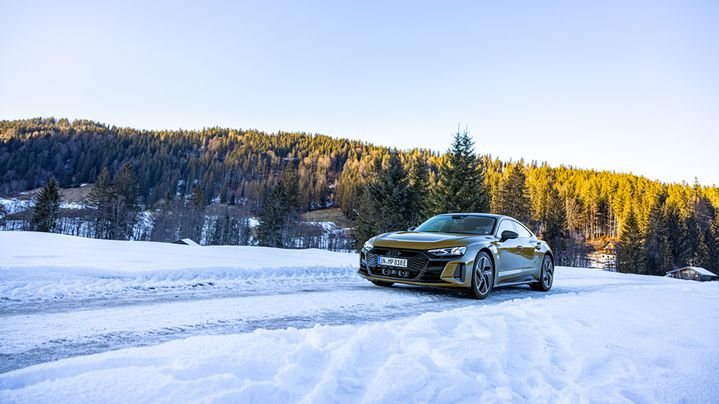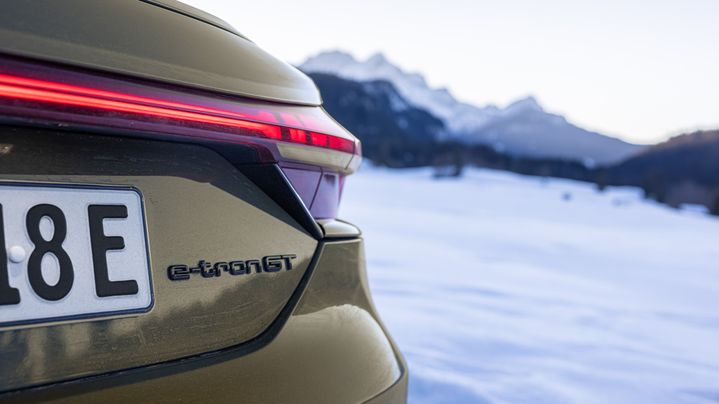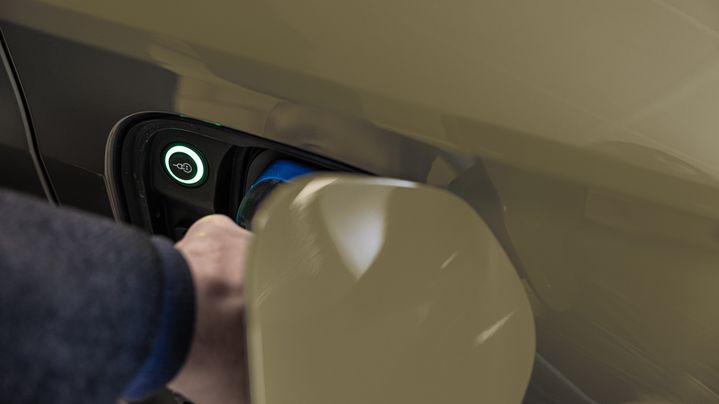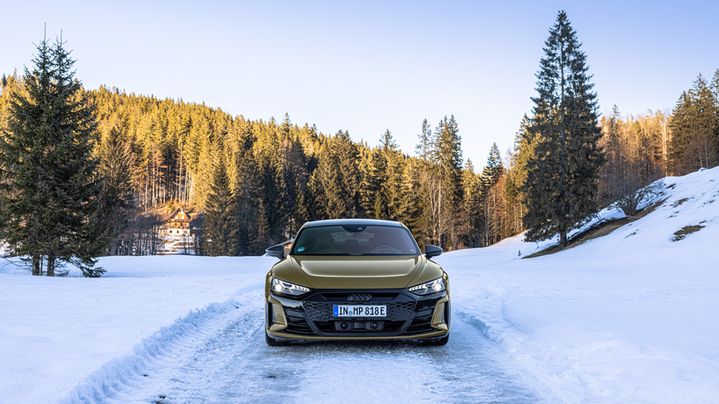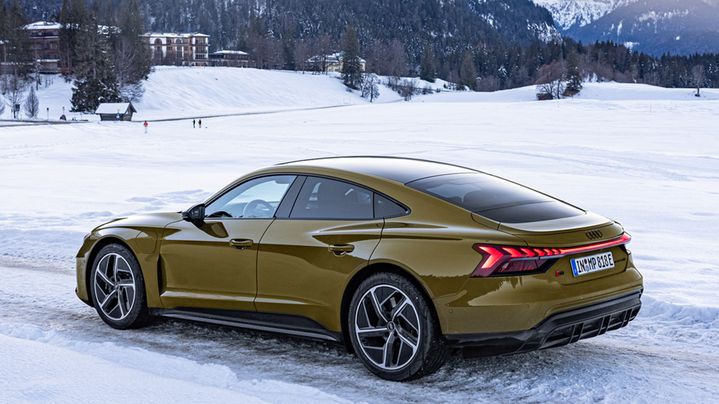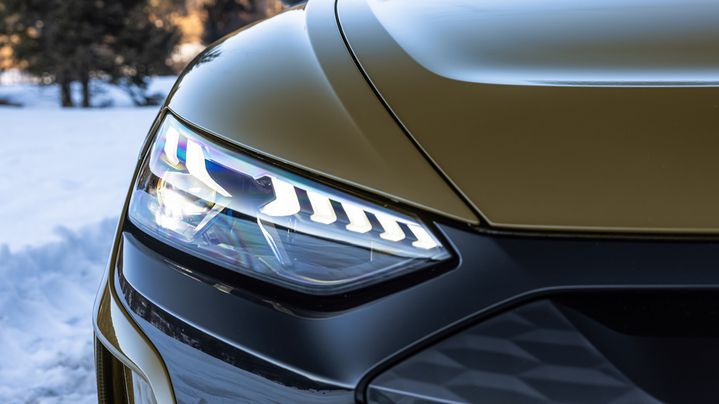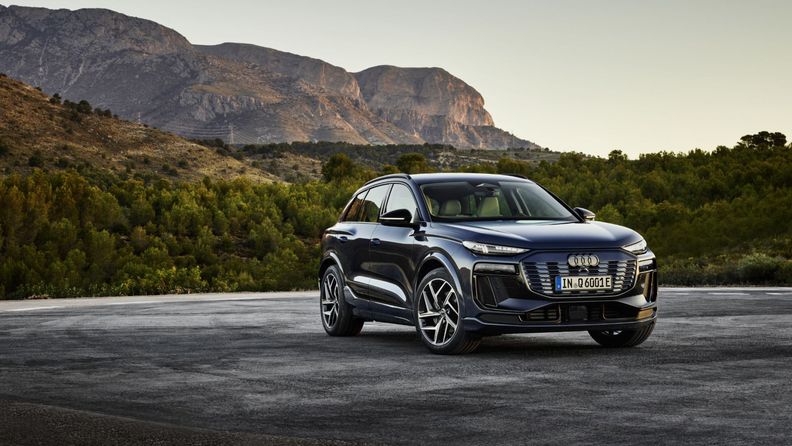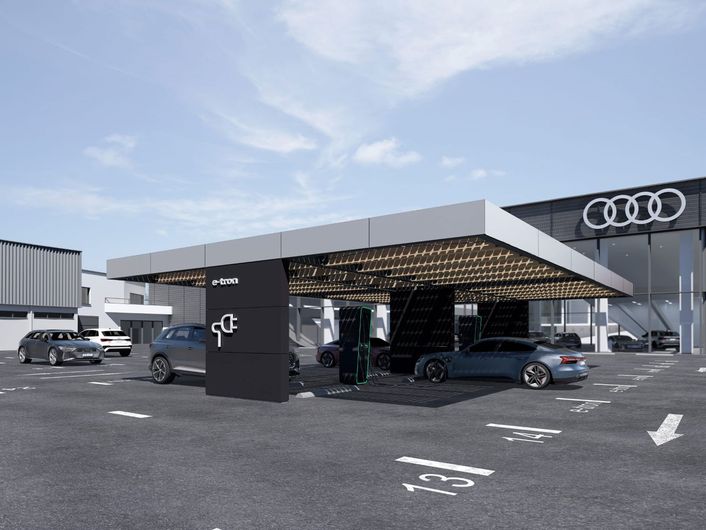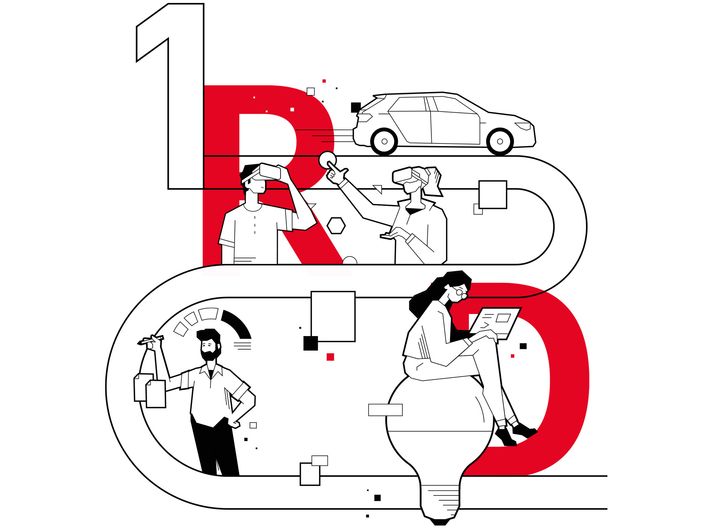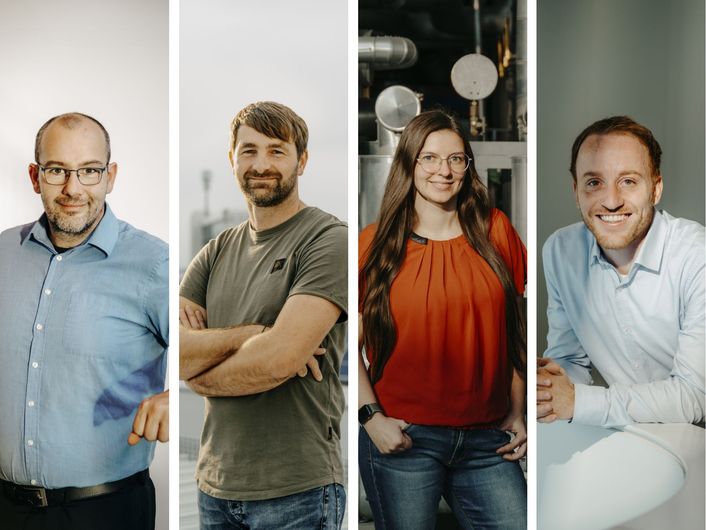The ideal line to more sustainability
Audi RS e-tron GT: Power consumption (combined) in kWh/100 km: 22.1–19.8CO₂ emissions (combined) in g/km: 0CO₂ emission class: A
Audi RS e-tron GT: Power consumption (combined) in kWh/100 km: 22.1–19.8CO₂ emissions (combined) in g/km: 0CO₂ emission class: A

“You can feel it with every fiber of your being”
When former ski star Felix Neureuther leaves his house in Garmisch-Partenkirchen and walks past the stone-clad wall down to his underground garage and through the gray metal gate, he enters his very own electric domain. Next to an e-mountain bike and an electric lawn mower stands the latest treasure in his collection: the fully electric Audi RS e-tron GT. “This car is a beast. Its acceleration is incredible. You can feel it with every fiber of your being – it’s awesome!” says Neureuther enthusiastically.
The Audi RS e-tron GT combines attractive design and technical innovation with pure power, delivering 475 kW (646 PS) in boost mode and acceleration from 0 to 100 km/h in 3.3 seconds in boost mode, yet still offering exceptional sustainability (combined electric power consumption in kWh/100 km: 20.2–19.3 (NEDC), 22.6–20.6 (WLTP); combined CO₂ emissions in g/km: 0). This is because the car was delivered to customers as net carbon-neutral1 – just like all the fully electric models supplied by the Four Rings in the USA and Europe since January 1, 2021.
Audi RS e-tron GT: Power consumption (combined) in kWh/100 km: 22.1–19.8CO₂ emissions (combined) in g/km: 0CO₂ emission class: A
Audi RS e-tron GT: Power consumption (combined) in kWh/100 km: 22.1–19.8CO₂ emissions (combined) in g/km: 0CO₂ emission class: A

Saving CO₂ emissions in procurement and production
To achieve this, Audi has a variety of measures in place in the upstream supply chain processes as well as in production and logistics. The goal is ambitious: For instance, by 2025 Audi wants production at all its own sites to be net carbon-neutral.1 In 2018, the “CO₂ program in the supply chain” was also initiated with the aim of successively decarbonizing the supply chain. For this purpose, Audi Procurement relies on green energy, CO₂-reduced aluminum and CO₂-reduced steel as well as recycling concepts and secondary material in various areas. In this way, a total of more than 480,000 metric tons of CO₂ were saved in the supply chain in 2021.
There is a particular emphasis on aluminum, since its production is especially energy-intensive. The Four Rings have continually optimized recycling through the Aluminum Closed Loop. By turning aluminum waste from production into new aluminum, a total of more than 195,000 metric tons of CO₂ was avoided at the sites in Ingolstadt, Neckarsulm, Győr and the multi-brand site in Bratislava in collaboration with the suppliers concerned.
As part of a pilot project, Audi is procuring 20-inch rims for the Audi RS e-tron GT that are made from CO₂-reduced aluminum. The manufacturer Alcoa supplies the material from an innovative, self-developed smelting process that emits oxygen instead of carbon dioxide. Unlike traditional aluminum manufacturing processes, this technology does not cause any direct CO₂ emissions.
In addition, parts are in use that are made from recyclates – that is, recycled materials – such as Econyl, which is made entirely from reprocessed nylon fibers and is used, among other things, as a material for carpets and floor mats for the Audi RS e-tron GT.
Audi RS e-tron GT: Power consumption (combined) in kWh/100 km: 22.1–19.8CO₂ emissions (combined) in g/km: 0CO₂ emission class: A
Audi RS e-tron GT: Power consumption (combined) in kWh/100 km: 22.1–19.8CO₂ emissions (combined) in g/km: 0CO₂ emission class: A
Cell production with renewable energy
Another focal point is the high-voltage battery whose production is very CO₂-intensive. To counteract this, Audi has reached an agreement with its battery cell manufacturers for new electric models to be sold in the USA and Europe: Only renewable energy that is not produced from nuclear power or fossil fuels may be used for cell production. Audi uses climate protection projects to offset CO₂ emissions that cannot be avoided in the supply chain and in production despite the measures that have been implemented to date.2
In accordance with its Code of Conduct, the Four Rings work only with partner companies in the area of procurement that are committed to the same environmental protection values and goals in terms of environmental protection, employee rights and compliance (integral part of the contract). A Sustainability Rating that is mandatory in the Volkswagen Group records and governs how suppliers are implementing sustainability standards.
Electric mobility supports climate protection
As an Audi brand ambassador and a parent, Felix Neureuther is also committed to sustainability. For him, this is the issue facing us today and in the future. “As a father of two, I think we need to work to ensure that our planet remains livable for future generations,” says Neureuther. To achieve this, significant CO₂ reductions are required. Felix Neureuther understands the importance of electric mobility for climate protection: “It helps reduce CO₂ emissions. This is the only way we can leave a clean and healthy planet for future generations.”
The Bavarian is very attached to his homeland. He loves the mountains, the snow and the unspoiled landscape. His hope for the future is that his children will be able to enjoy it just as much as he can. His daughter Matilda is four years old and is already skiing. And in 20 years’ time? The snow cover in Neureuther’s homeland is shrinking, and the effects of climate change have long since been noticeable in Upper Bavaria. “As a skier, I’ve experienced first-hand how the glaciers have changed over the years. It’s a frightening trend,” says Neureuther. To play his part, he has built a home designed for sustainability, featuring lots of wood, a state-of-the-art energy system in the basement and a photovoltaic system on the roof.
“The great thing about the photovoltaic system is that we can charge our electric car practically free of charge, which is just fantastic.” His delight is palpable. When Felix Neureuther pulls the cable out of his Audi RS e-tron GT in his garage after charging, he flashes a beaming smile that could even outshine the gleaming black and gray wall box.
Audi RS e-tron GT: Power consumption (combined) in kWh/100 km: 22.1–19.8CO₂ emissions (combined) in g/km: 0CO₂ emission class: A
Audi RS e-tron GT: Power consumption (combined) in kWh/100 km: 22.1–19.8CO₂ emissions (combined) in g/km: 0CO₂ emission class: A
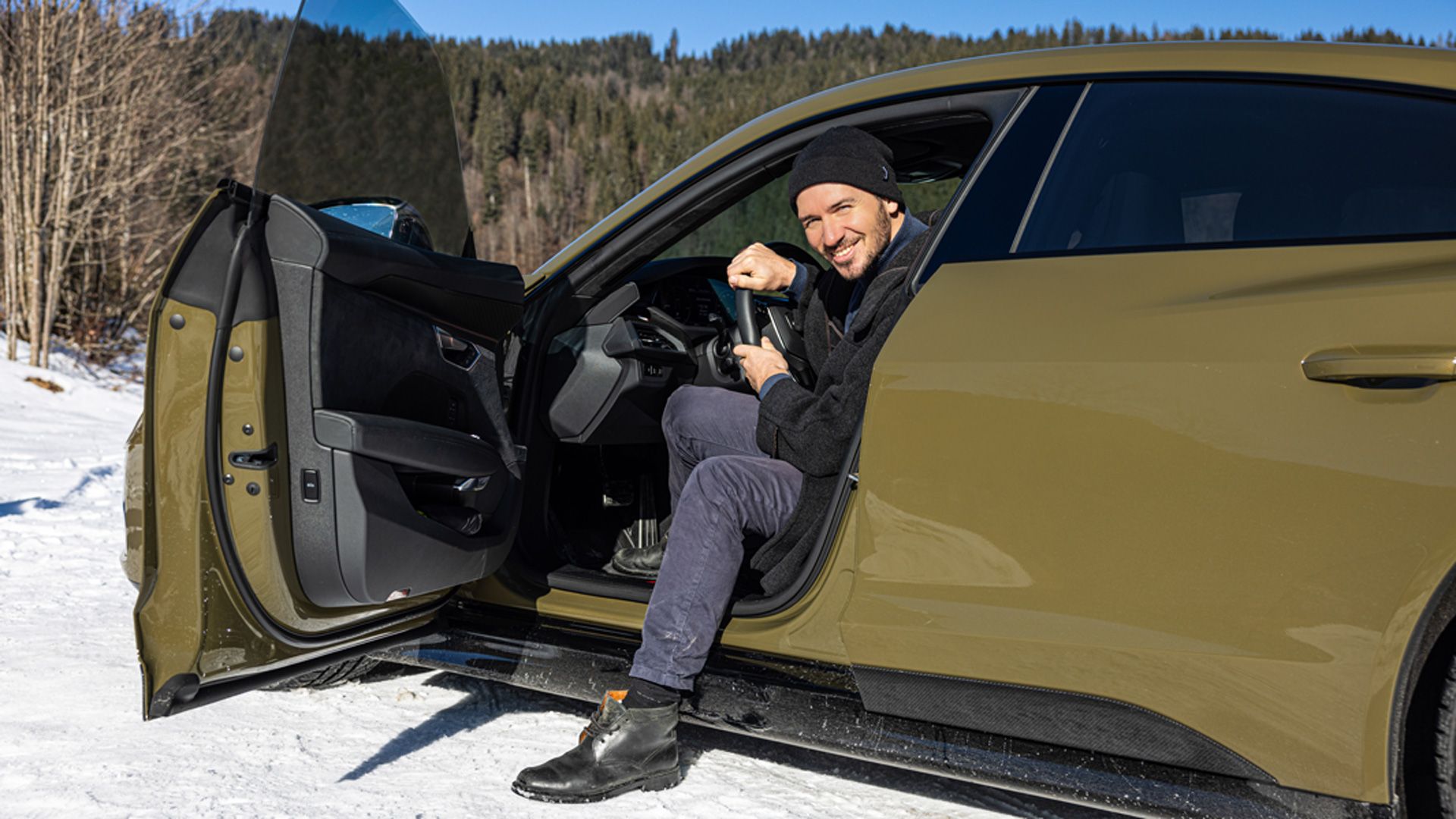
Audi RS e-tron GT: Power consumption (combined) in kWh/100 km: 22.1–19.8CO₂ emissions (combined) in g/km: 0CO₂ emission class: A
Audi RS e-tron GT: Power consumption (combined) in kWh/100 km: 22.1–19.8CO₂ emissions (combined) in g/km: 0CO₂ emission class: A
Charging with green electricity
Audi is well aware that electric driving is only as “green” as the electricity used. 3 That is why the company is supporting customers in producing as little CO₂ as possible throughout the utilization phase of their electric models. Audi has a range of offers designed to make charging easy and, with renewable energy, environmentally friendly for as many customers as possible. Since most charging takes place at home, the Four Rings offer wall boxes that can be operated absolutely carbon neutrally, in conjunction with green electricity provider Elli, for example.
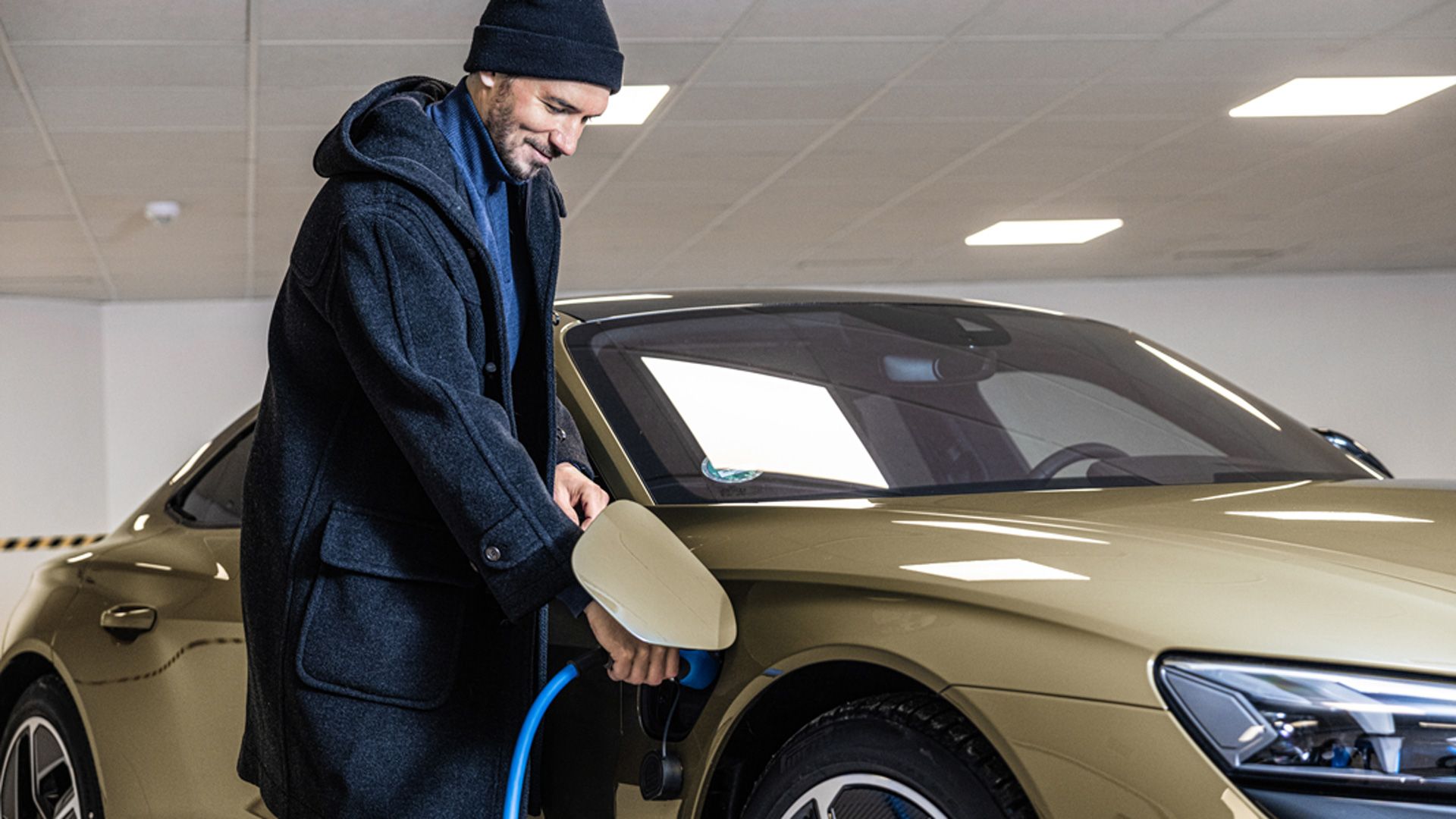
Audi RS e-tron GT: Power consumption (combined) in kWh/100 km: 22.1–19.8CO₂ emissions (combined) in g/km: 0CO₂ emission class: A
Audi RS e-tron GT: Power consumption (combined) in kWh/100 km: 22.1–19.8CO₂ emissions (combined) in g/km: 0CO₂ emission class: A
high-power-charging
For charging on the go, by 2025 Audi and its joint venture IONITY are planning to install more than 5,000 additional fast-charging points with charging capacity of up to 350 kW at over 1,000 locations in Europe – using completely renewable energy sources 3 The Audi Charging Hub is the vision of a premium charging experience – with high-power charging (HPC) points that Audi customers can book in advance and a connected optional lounge area. At the pilot location in Nuremberg, the Audi RS e-tron GT can charge enough energy for up to 100 kilometers in just over five minutes, and a charge from 5 to 80 percent takes just under 23 minutes under ideal conditions (according to WLTP).
Audi RS e-tron GT: Power consumption (combined) in kWh/100 km: 22.1–19.8CO₂ emissions (combined) in g/km: 0CO₂ emission class: A
Audi RS e-tron GT: Power consumption (combined) in kWh/100 km: 22.1–19.8CO₂ emissions (combined) in g/km: 0CO₂ emission class: A

Audi RS e-tron GT: Power consumption (combined) in kWh/100 km: 22.1–19.8CO₂ emissions (combined) in g/km: 0CO₂ emission class: A
Audi RS e-tron GT: Power consumption (combined) in kWh/100 km: 22.1–19.8CO₂ emissions (combined) in g/km: 0CO₂ emission class: A
New life for old batteries
Even when the useful life of an electric Audi comes to an end, the company takes care of the recycling and other uses of the vehicle battery.3
Audi batteries are given a second life in applications such as fast-charging stations, for example at the Audi Charging Hub. Or they can be used as stationary energy storage devices to temporarily store electricity from power stations during phases of surplus energy. For this purpose, Audi is cooperating with the utility company RWE in the North Rhine-Westphalian town of Herdecke, for instance. RWE operates an energy storage system there that features used lithium-ion batteries from electric vehicles from Audi. With the help of 60 battery systems, this novel storage on the premises of the RWE pumped-storage power plant at the Lake Hengstey reservoir will provide intermediate storage of around 4.5 megawatt hours of electricity.
Seamless power
Felix Neureuther needs fast power, too, whether on the ski slopes or when driving his car in the Bavarian mountains. When he is behind the wheel, you can feel how much he loves sporty driving. He is particularly impressed with the stepless electric acceleration of the RS e-tron GT: “Torque is transmitted much more directly when accelerating compared with a combustion model. The power, the dynamics, everything is seamless. It’s hard to describe. You have to experience it for yourself.”
As the sun slowly sinks behind the snow-capped mountain peaks, Felix Neureuther takes a short break in the Audi RS e-tron GT to take in the magnificent panoramic views of the Alps. Nature was the Bavarian’s first great love, and he couldn’t imagine life without it: “For a long time I’ve wanted a vehicle that combines sportiness and sustainability. The Audi RS e-tron GT is ideal for me – both logically and emotionally.”
Audi RS e-tron GT: Power consumption (combined) in kWh/100 km: 22.1–19.8CO₂ emissions (combined) in g/km: 0CO₂ emission class: A
Audi RS e-tron GT: Power consumption (combined) in kWh/100 km: 22.1–19.8CO₂ emissions (combined) in g/km: 0CO₂ emission class: A
CO₂ targets and measures at Audi
CO₂ targets and measures at Audi
Audi has set itself ambitious targets of net carbon-neutral1 production at all its sites by 2025. The company wants to play its part in upholding the Paris Climate Agreement by becoming net carbon-neutral1 by 2050 at the latest. In addition, it plans to have more than 20 fully electric vehicles on the market by 2026. Audi will invest more than EUR 18 billion for this by 2026. From then on, the brand only wants to introduce new models on the global market that are fully electric. Consequently, Audi will gradually phase out the production of combustion vehicles by 2033, with the possible exception of China. Here, the possibility of longer production depending on local demand is currently being investigated.
On the road to climate-friendly mobility, Audi is using the decarbonization index (DCI),4 which is the central key indicator for climate targets for all brands in the Volkswagen Group. The DCI is a strategic indicator for reducing CO₂. The DCI factors in the entire value chain – from the extraction of raw materials and production to the provision of fuel and electricity and vehicle emissions to recycling. Audi is rigorously implementing measures at all points of the value chain. Product- and portfolio-related CO₂ topics in the product utilization phase are dealt with at Audi by the CO₂ steering committee. Additional decarbonization through voluntary company measures is the province of the decarbonization index working group, which was especially set up for this purpose. Both the CO₂ steering committee and the decarbonization index working group have a direct connection as warranted to the full Board of Management of AUDI AG.5 Measured against 2018, the DCI of Audi is expected to fall by 40 percent by 2030.6 In 2021, measures taken in the supply chain and utilization phase already helped to prevent 2.5 million metric tons of CO₂.
Since 2021, the DCI has been an integral part of target achievement for the purposes of management remuneration. In 2022, the Environment, Social and Governance (ESG)-related components used to calculate management remuneration were expanded to include, for example, sales classified as “green” according to the EU taxonomy or the company’s performance in a sustainability rating.
Fleet emissions and consumption
Fleet emissions and consumption
As its contribution to the “two-degree goal” of the Paris Climate Agreement, Audi is concentrating, among other things, on reducing the CO₂ emissions of its vehicle fleet.3
Based on provisional figures, the company surpassed its CO₂ fleet targets for Europe within the Volkswagen emissions pool in 2021. With a calculated value of 122 g/km,7 Audi was below the legally prescribed 129 g/km. Fleet consumption in China (fully built-up (FBU) vehicle for export) in 2021 was 8.4 l/100 km8 9 (2020: 7.9 l/100 km).
CO₂ – sucked out of the air
CO₂ – sucked out of the air
In pursuit of the mission to achieve carbon neutrality, the Four Rings are currently involved in a pilot project in Iceland with Swiss company Climeworks. The central idea behind the project involves removing harmful CO2 from the air to protect the environment. This is possible – with direct air capture technology. In Iceland, Climeworks has built the world’s largest facility for converting atmospheric CO2 to rock. Using this technology, carbon dioxide is extracted from the ambient air and air free of CO2 is returned to the atmosphere. The facility transports the CO2 filtered out of the air roughly 2,000 meters below the earth’s surface, where natural processes then mineralize it. It is thus permanently removed from the atmosphere. Audi has been a partner of the Zurich-based environmental startup for many years, and with this project is promoting a future technology that has great potential for reducing carbon emissions. The facility is expected to filter 4,000 metric tons of CO2 from the air each year – 1,000 metric tons on behalf of Audi.
Audi’s commitment to clean electricity
Audi’s commitment to clean electricity
Audi is actively driving regenerative power generation in Germany. The company is working with partners from the energy industry to build new wind and solar farms in Europe by 2025. 3 These farms are expected to generate around five terawatt hours of additional green electricity, which corresponds to a capacity of around 250 new wind turbines, for example. The first project, a solar park in the German state of Mecklenburg-Western Pomerania, is being developed in collaboration with the German utility company RWE as a joint project with the Volkswagen Group. The plant came on stream in January 2022 and is designed for a total capacity of 170 million kilowatt hours. Encompassing nearly 420,000 solar panels, it is one of the largest independent solar parks in Germany, and further projects are in planning. Moreover, production of the Audi RS e-tron GT at the Böllinger Höfe facility in Neckarsulm uses 100 percent eco-electricity. The heat required for production is provided by a combined heat-and-power plant fired with biogas.
Audi RS e-tron GT: Power consumption (combined) in kWh/100 km: 22.1–19.8CO₂ emissions (combined) in g/km: 0CO₂ emission class: A
Audi RS e-tron GT: Power consumption (combined) in kWh/100 km: 22.1–19.8CO₂ emissions (combined) in g/km: 0CO₂ emission class: A
